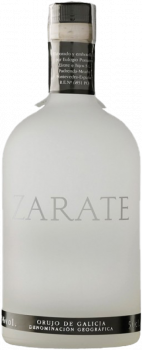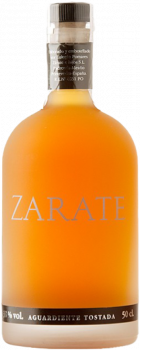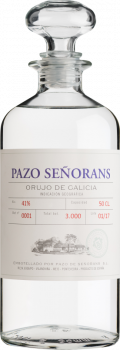Showing 1 to 16 of 36 (3 Pages)
Buy Orujo
Orujo is a spirit drink obtained from the skin of pressed or squeezed grapes. This substance is fermented and distilled, reaching an alcohol content of at least 37,5 %. Among the most outstanding varieties are Marc in France, Grappa in Italy and Orujo de Galicia in Spain.
Orujo production process
In the process of making the orujo, the solid parts of the grape that are not used to make wine are made use of. These grape skins are pressed or squeezed to obtain a substance.
This liquid is subjected to a process of fermentation and subsequent distillation, to obtain the orujo. The distillation process must be carried out slowly and steadily in two phases: firstly, the vaporisation of the volatile elements of the substance and, secondly, the condensation of these vapours.
This results in a spirit with an alcohol content which, according to the regulations in force, must have a minimum of 37.5% alcohol volume.
Different types of orujo
The orujo can be classified according to its colouring - or the absence of it - which will be determined from the lack or presence of contact with the wood after its production.
Differences between white orujo and aged orujo
In this sense, the white orujo is characterized by the absence of color, while the aged orujo, has dyes from its rest in wooden containers of about a thousand liters, for at least a year.
In turn, orujo bottles can be differentiated with respect to their denomination of origin, that is to say, the region where they were produced, which imprints them with characteristic aromas and flavors.
Thus, we can distinguish the Marc in France, the Aguardiente in Portugal, the Grappa in Italy and the Orujo de Galicia in Spain.
- ;
- ;
- ;
- ;
- ;
-
-
- ;
-
- ;
-
- ;
Buy Orujo
Orujo is a spirit drink obtained from the skin of pressed or squeezed grapes. This substance is fermented and distilled, reaching an alcohol content of at least 37,5 %. Among the most outstanding varieties are Marc in France, Grappa in Italy and Orujo de Galicia in Spain.
Orujo production process
In the process of making the orujo, the solid parts of the grape that are not used to make wine are made use of. These grape skins are pressed or squeezed to obtain a substance.
This liquid is subjected to a process of fermentation and subsequent distillation, to obtain the orujo. The distillation process must be carried out slowly and steadily in two phases: firstly, the vaporisation of the volatile elements of the substance and, secondly, the condensation of these vapours.
This results in a spirit with an alcohol content which, according to the regulations in force, must have a minimum of 37.5% alcohol volume.
Different types of orujo
The orujo can be classified according to its colouring - or the absence of it - which will be determined from the lack or presence of contact with the wood after its production.
Differences between white orujo and aged orujo
In this sense, the white orujo is characterized by the absence of color, while the aged orujo, has dyes from its rest in wooden containers of about a thousand liters, for at least a year.
In turn, orujo bottles can be differentiated with respect to their denomination of origin, that is to say, the region where they were produced, which imprints them with characteristic aromas and flavors.
Thus, we can distinguish the Marc in France, the Aguardiente in Portugal, the Grappa in Italy and the Orujo de Galicia in Spain.





